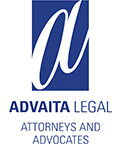Tax authorities have issued several show-cause notices (SCNs) to auto-component manufacturers (ACMs) recently, seeking to recover additional excise duty on designs or drawings provided by automobile companies to the ACMs for the production and manufacture of automobile parts.

Partner
Advaita Legal
Industry practice: Automobile companies typically enter into licensing agreements with their foreign parent company for the licensing of a whole range of intellectual property rights, designs, drawings and technical know-how with respect to the various aspects and parts of vehicle manufacturing and automobile companies in India pay royalties to the foreign parent companies as agreed under the licensing agreements.
Designs and drawings are provided to ACMs as a separate transaction for the purpose of manufacturing the parts, which are then supplied to automobile companies for incorporation into vehicles.
The tax department issued SCNs to various ACMs across the country alleging that the ACMs, in collusion with automobile companies evaded excise duty by not adding the value of designs or drawings to the final components manufactured. The designs and drawings made available are alleged to be an additional consideration and thus liable to excise duty.

Managing associate
Advaita Legal
Legal position: Section 4 of the Central Excise Act, 1944 (CEA), prescribes that if the buyer and seller are not related and price is the sole consideration then excise duty calculation shall be based on the transaction value. Section 4(1)(b) states that in any other case the duty shall be determined in accordance with the rules. Strong reliance is placed by the department on rule 6 of Central Excise (Determination of Price of Excisable Goods) Rules, 2000 (rules), where the value of designs and drawings and blueprints are added to the consideration in situations where price is not the sole consideration.
It is, however, surprising that the department has brought this up after the introduction of the goods and services tax (GST) as the practice of not including the value of designs and drawings in the final consideration is a decades-old industry practice. Under the GST rules, the automobile company cannot get any credit for incremental excise duties paid by ACMs.
Key arguments that may be adopted by the ACMs are as under:
- The provision of designs and drawings is a condition of contract and not an additional consideration. The designs and drawings provided to ACMs are given because it is necessary to manufacture auto-components in accordance with the specifications of the carmaker. They don’t form any additional consideration for the ACMs.
- A distinction should be made between a technical drawing and a simple drawing or specification. A specification does not form part of the consideration for the purpose of rule 6. However, it must be remembered that the courts have generally set a very high bar for drawings or designs to evade rule 6 by qualification as a specification. The Customs Excise and Service Tax Appellate Tribunal (CESTAT), in the case of Commissioner of Central Excise v Tata Motors (2009), went to the extent of arguing that drawings not capable of being converted to textual form cannot be simple drawings.
- There is no methodology prescribed for the determination of the value of designs or drawings. The values adopted in the SCNs are based on the royalty paid by the automobile manufacturers to the foreign parent company, which has “scant nexus” with the transaction between ACMs and automobile manufacturers. Such an approach is completely fallacious, arbitrary and extortionate.
Effectiveness of writ petitions: Numerous writs have been filed challenging the initiation of investigations under pre-GST taxes after the implementation of GST. However, the courts have consistently rejected such attempts and it does not seem to be a prudent and sound legal strategy any more.
Nonetheless, considering the situation in its entirety, especially the timing of such SCNs, an alternative writ petition could be issued seeking directions that the government have recourse to section 11C of CEA.
Section 11C states that if there is an industry practice of treating a transaction in a particular way the government has the power to issue an exemption to validate such practice. This approach seems to be worth exploring before the high courts, more so when the government has issued notifications under section 11C on various other issues and transactions after GST as well.
Sudipta Bhattacharjee is a partner and Shashank Shekhar is a managing associate at Advaita Legal. With assistance from Arjyadeep Roy, who is an associate.

Advaita Legal
2nd Floor, Block F, International Trade Tower
Nehru Place, New Delhi – 1110 019, IndiaLodha Excelus, 1st Floor
Apollo Mills Compound, NM Joshi Marg
Mahalakshmi, Mumbai – 400 011, India
Contact details
New Delhi | Tel: +91 11 3323 2700
Mumbai | Tel: +91 22 3989 6000
Email: monalidutta@advaitalegal.com


























